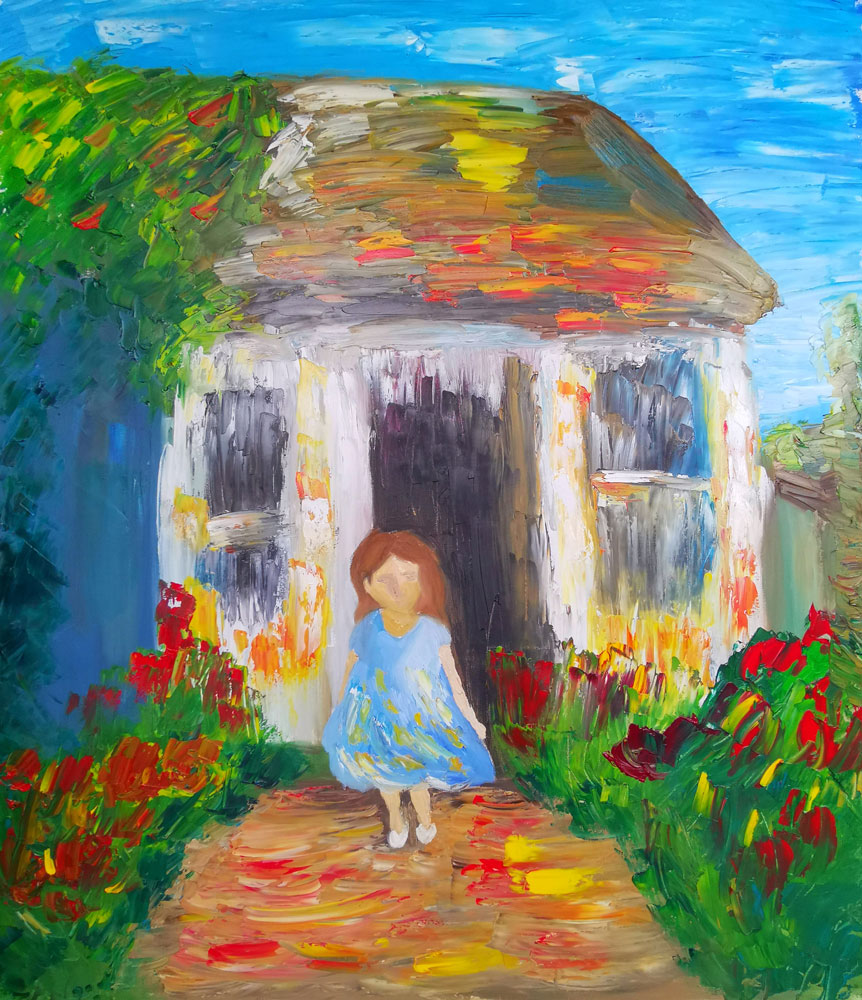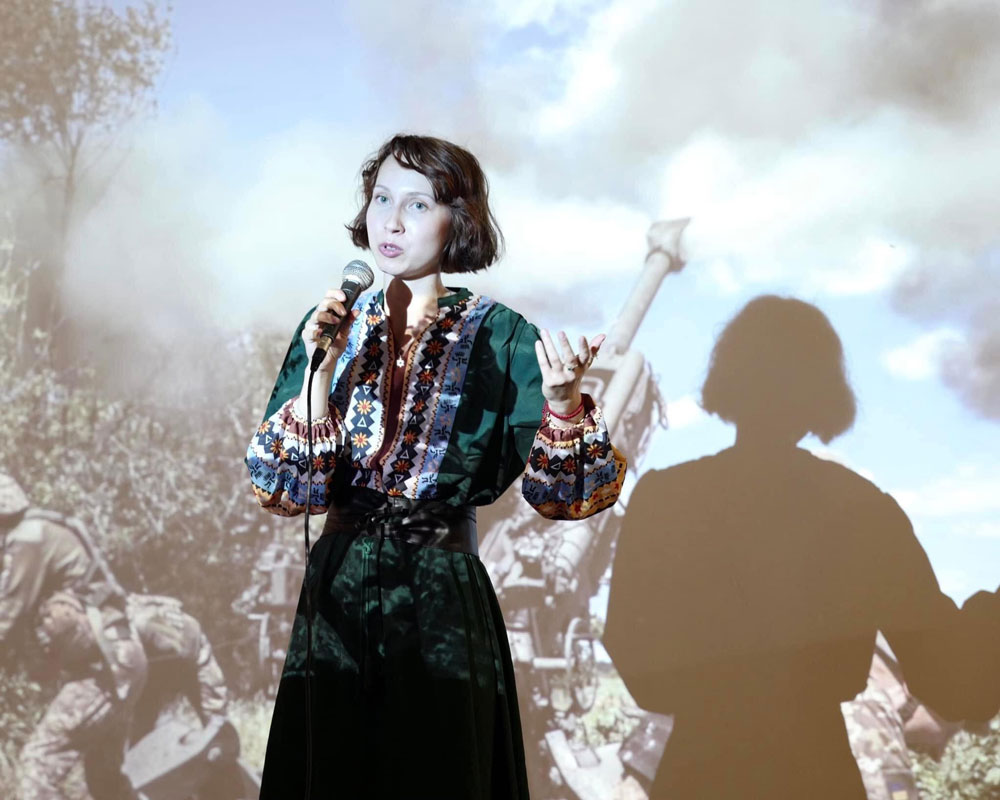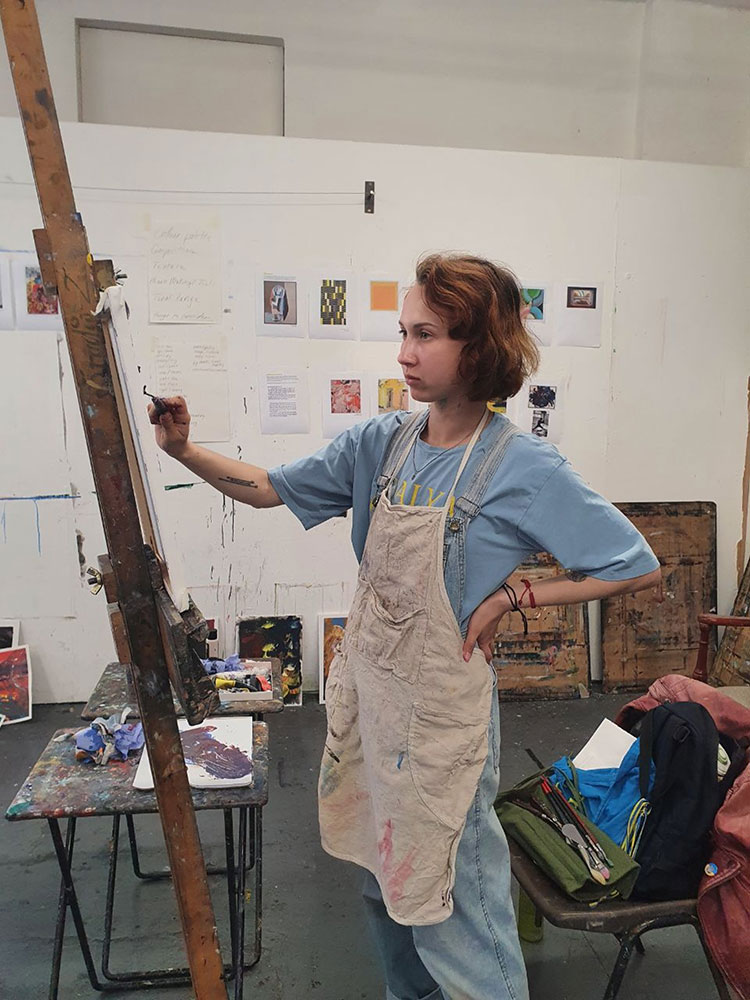
Posted as part of – Publication for Donation initiative.
We thank the artist for helping and supporting animals!
I view art as a powerful vehicle for self-exploration and introspection. Through the interplay of colours, shapes, and textures, I delve deep into the realms of my own emotions, memories, and subconscious.
Born: Crimea, Ukraine
Now: London, UK
@ginger_gift | website
INTERVIEW
Why did you decide to take part in the initiative and apply? What does it mean to you to help animals?
I am originally from Ukraine, my whole family lives there and everything that happens at home affects me directly and worries me a lot. I have been donating to the UAnimal fund for a long time and I know that they can be trusted. Since I live abroad and have many art connections here, I think this project is an excellent opportunity for me to raise the topic of helping Ukraine, and animals, in particular, one more time, draw attention to this and encourage people to donate more by participating in this initiative.

You have a solid art background focusing on curating and related work experience. What do you like and find most interesting about art?
What I find most captivating about art is its unique power to influence reality and create meaningful connections with people. Art has this incredible ability to evoke emotions, provoke thought, and challenge perceptions. I believe that art plays a vital role in shaping society and reflecting the diverse perspectives of our world.
“A picture is worth a thousand words” – one image, be it a painting, photograph or sculpture, can make a stronger impression on a person and convey a message directly to them without any words and discussions.
When I create an exhibition, I want it to leave a strong impression on the visitors and not necessarily a positive one. I don’t think that art must necessarily be aesthetically beautiful, but it must change something in a person’s soul, put something new into it and shake it. I saw a lot of times how the emotions of people change from looking at the artworks, how they cried or smiled, so I am confident in the power of art to influence mind and souls, and thus, I am very interested in working with it, creating and presenting it to the world in such a way as to leave the impression that I want.

Let’s continue the topic of curating. You have often acted as an assistant curator or curator in different parts of the world. What experience did this activity give you, and which project was the most memorable?
Working as a curator in various institutions and independently allowed me to explore different sides of the art industry, from organising exhibitions to handling logistics and interacting with artists and visitors, build my confidence and stress resistance (as art projects can often be quite a challenge), as well as creating a lot of connections with people from diverse backgrounds and communities, that expanded my perception of the world in general.
The most memorable project for me as a curator, and the one I am most proud of currently is the series of charity anti-war art exhibitions Our Home: Ukraine dedicated to Ukraine and supporting Ukrainian artists in 2022-2023 in London, Coventry, Oxford, Cambridge, Munich, Nuremberg, and Berlin.
We exhibited works from more than 20 Ukrainian artists working across various mediums and from different locations, but all in response to the idea of what it means to be Ukrainian and stand against the war. To be honest, it was difficult both mentally and physically, but this project is very dear to my heart and I am very proud of what we did and how many people we were able to help

Triptych, Found Home
What influenced your formation as an artist? You have a fairly wide range of interests – performance (which you took in London), traditional painting, ceramics…
My formation as an artist has been shaped by a diverse range of influences and experiences. I have always been involved in creating art, I graduated from an art school in Ukraine and this traditional art school background provided a strong foundation in classical techniques and aesthetics and I continue to refer to it now as an artist, but do not limit myself to it.
During my studies at the university, I researched a lot of art history in detail, which allowed me to get acquainted with different artists and art styles and understand which ones are closer to me and such styles as Post-Impressionism, Abstract expressionism, Surrealism definitely influenced my current artistic style.
At the same time, I started to get involved in performances, in the Netherlands I was regularly organising them and taking part myself. Exploring the intersection of body, space, and time has allowed me to challenge traditional artistic boundaries and express my ideas in unconventional ways.
In general, I try not to limit myself to one technique or artistic method. Currently I paint in a more abstract style, as I feel that it gives me more freedom of expression.

It’s interesting that you started performing in exhibitions as a participant only this year. Any interesting insights? What is the feeling of being in a different role than as an organizer?
I participated in exhibitions before, but it was a long time ago and I don’t create in the same style anymore, so I don’t take it into account. Strange as it may sound, the war prompted me to actively participate in exhibitions right now. I realised that there was no point in postponing life, because the future may simply not come, no matter how pessimistic it may sound. So I threw myself into further art education and currently have creating art as my main focus, which I wanted to do for a very long time. I can say that participating as a performer has brought a new dimension to my artistic journey. It is easier to some degree because as the artist in most cases you do not have to deal with technicalities of the exhibition, while as the curator, it was my main job. But also now I learn how to take creative risks and be vulnerable when you step into the spotlight, as before I have always been focused on creating meaningful art experiences for others. This also makes my engagement with the public more personal, which is very exciting but can be scary as well.

What advice would you give to aspiring artists?
Try to be authentic and unique, the art world is vast and diverse, with countless artists and curators, and being authentic helps you to stand out from them and attract the attention of the public.
Establish a strong online presence. Create a website showcasing your portfolio, maintain active social media accounts, and join professional platforms. Being present online allows potential buyers of your art to discover your work and connect with you easily.
Networking is crucial.
Attend art events, engage with fellow artists and art professionals, and don’t be afraid to reach out and offer your services.
Building a network can lead to valuable recommendations and opportunities for your artistic career.
And the most important, in my opinion, is to keep an eye on burnout. Pursuing an art career can be demanding, so remember to take breaks, practice self-care, and maintain a healthy work-life balance.